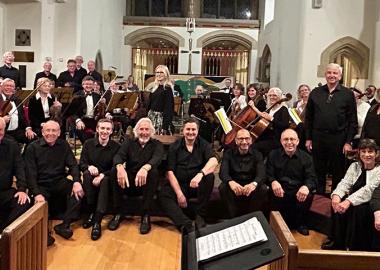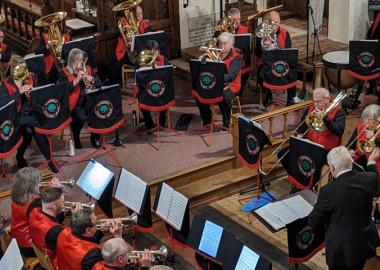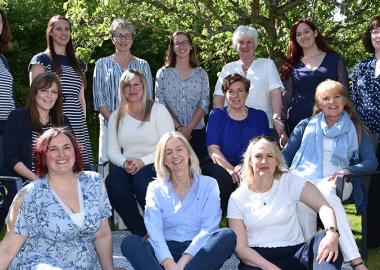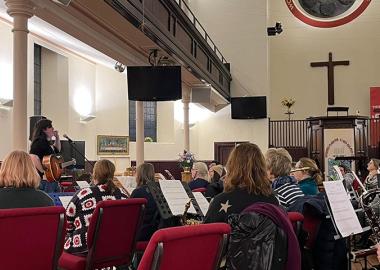During the Autumn of 1936, Oswald Moseley led the British Union of Fascists on a march through the streets of East London, in what was seen by many as an anti-semitic demonstration. The large local Jewish community, alongside anti-fascist groups, built roadblocks in order to prevent them from passing, and a riot of historic proportions ensued. Today, if you walk East down Cable Street, you'd be hard-pushed to miss the huge mural which depicts these events (see below), placing them in the context of the terrors which were then spreading across Europe.

Over this Summer I've been writing a new work for the East London Community Band, for their performance at this year's Remembering Cable Street event in Bethnal Green. It wasn't until the sobering day after the results of the recent EU referendum, as I passed the mural on my way to a workshop with the band in the Shadwell Community Centre, that it struck me how closely these issues resemble the political and racial tension in the UK today.
Barricades takes its name from the old Jewish folk song Barikadn, which was written by the Vilna poet-partisan Shmerke Kaczerginsky. Although the lyrics (“Fathers, mothers and little children are building barricades”) describe another time and place in Jewish history, they too resonate very closely with the events that came to pass during the Battle Of Cable Street.
Whilst this composition is certainly not meant as a depiction of the conflicting forces of good and evil (a cliché I was keen to avoid), it is, however, drawn from this idea of confrontation. The music is built from two contrasting textures which meet face to face in stark fronts of sound, cutting each other off abruptly with piquant bursts of allied percussion. As these collisions continue, and the barricades between them gradually weaken, the structural autonomy of the two textures are compromised, and they begin to overlap and merge in a simple dialogue of dynamics and colour.
As I described in my previous blog, the East London Community Band is an amateur concert band comprised of players from a broad spectrum of musical backgrounds, ranging from young to old, beginner to semi-professional. The band had opted into the Adopt A Composer scheme with little to no experience of performing 'New Music', and certainly having never worked alongside a composer who was writing a piece specifically for them to play.
As such, it seemed part of my duty to create a work made of material that was in one way simple enough to be inclusive, whilst in other ways posed challenges and offered musical circumstances which the players would be unfamiliar with. The photo of the first page of the score below hopefully sheds some light on how this unfolded. The entire work consists of two elementary gestures – blocks of held notes and showers of repeated notes – and in this sense, no complicated or virtuosic demands are made (much to the dismay of a few players who were hoping for solo lines).
However, in this case, the challenge is found in the dependence on strong ensemble playing, dynamic control, and an unfamiliarity with the kind of notation used. Perhaps for players unused to new music, the still-greater challenge lies in trying to make musical sense of material which lacks the familiar qualities of a foreground melody, a hummable bass line, and a groove that you can tap your foot to!

Over recent years I've been fortunate to have involvement in a number of composer schemes, which often afford fairly luxurious contact time with the players. The Adopt A Composer scheme is built around this kind of relationship between composer-performer, encouraging a particularly collaborative slant to the writing process. In the case of a 40-piece band, however, this comes with its own complications.
In contrast, when writing for a solo performer, or even a small ensemble, the time between workshops can mostly be dedicated to creating new ideas, revising the old ones, and solving issues with the presentation of the music. But when each workshop requires the preparation of a 20-stave score and parts, this means a huge amount of time each week has to be put aside for the purpose of typesetting and part extraction (which, when your score makes use of spatial notation, can be very fiddly and labour-intensive).
Ultimately, though, this time restriction simply became one of the considerations which shaped the course of the piece, and that's absolutely fine – in my experience, as long as we remain willing to learn and to adapt, it is these very obstacles, lying hidden in the road ahead, which help give rise to something new.
Barricades will receive its premiere performance at Remembering Cable Street, St John's Church, Bethnal Green on 8 October 2016.











